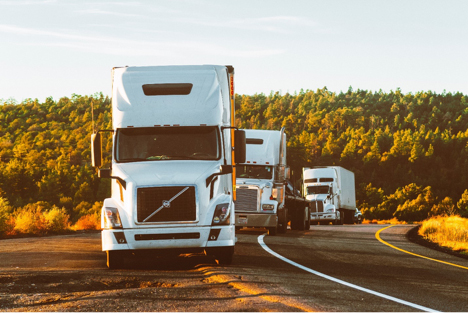
Intermodal freight transportation is referred to the movement of freight by the use of numerous modes of transportation (such as ships, trucks, and trains) in a single intermodal container or vehicle.
Through the intermodal freight delivery method, the items are protected from harm, and the delivery is expedited. Moving or transporting products from a shipper to a consignee by truck and rail is a standard delivery method for many customers.
The Future of Intermodal Freight Transport
We have predicted that multimodal transportation will shift from sea freight and rail to air freight in decades. While sea and rail transportation will always play a vital role in any company's supply chain, logistics is assured of leading the way in a new age of multimodal freight transportation.
In the future, autonomous delivery systems will play a significant role. Deliveries in the "final mile" will soon be dominated by drones, terrestrial robots, or self-driving automobiles.
In the future, autonomous delivery systems will play a significant role. Deliveries in the "final mile" will soon be dominated by drones, terrestrial robots, or self-driving automobiles.
However, many individuals have forgotten that these gadgets are already in use, and no one is paying attention to them. To expand its logistics network around the globe and develop its delivery drone manufacturing facility, Amazon has initiated an aggressive acquisition drive.
Despite some people's reservations, drones are already being used to carry mail in Switzerland and Germany. Amazon is experimenting with drone deliveries outside of the United States in three nations. This new and innovative technology has the potential to change the way things are transported.
The United Kingdom is already experimenting with ground-based autonomous robots for local grocery delivery in London. The Butler (a hotel robot that is automated) has already been operating for over a year in several different hotels. These technologies appear to be more likely to be accepted because they do not violate our airspace, but broader acceptability will undoubtedly come in time.
There are now self-driving trucks in Australia, and a convoy of autonomous vehicles is traveling around Europe, making regular deliveries in a remote location.
Self-driving trains have also emerged, and no one has raised a commotion about it. Airports worldwide use self-driving trains to transport hundreds of thousands or perhaps millions of passengers each day without incident.
Small robot train delivery systems are already being developed that could be integrated into the city's transportation and delivery infrastructure. More of this form of technology is inevitable in the future since it will be necessary to serve the rising demand of customers for goods and services.
Wrapping Up
In conclusion, we would like to mention that intermodal freight transportation will undoubtedly change during the next few years.
There has been a movement in intermodal freight transportation every few decades, so it is not surprising that robots and drones would revolutionize civilization.
The intermodal freight shipment will look quite different for the rest of the century because of ADS' innovative technology.